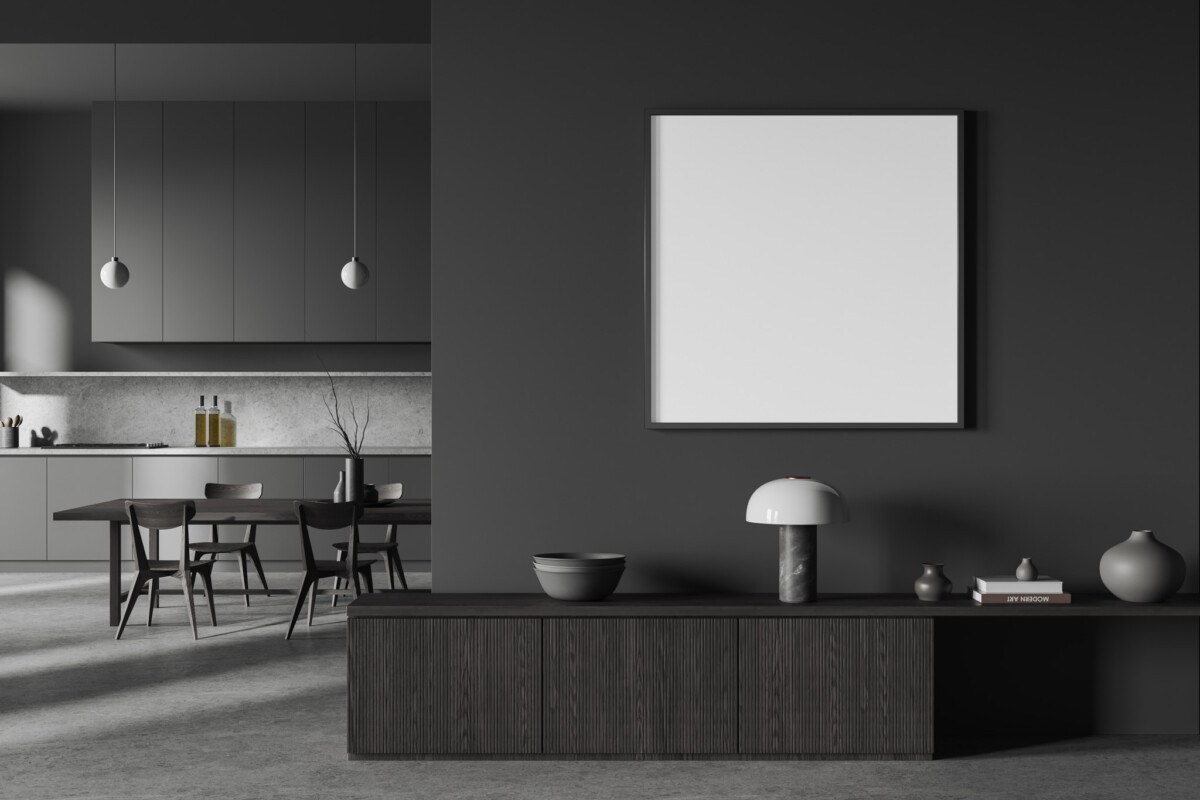The kitchen has always been the heart of the home. However, in today’s real estate market, it’s also one of the most valuable rooms regarding return on investment. Whether planning a full-scale renovation or subtle upgrades, the latest kitchen design trends enhance functionality and beauty and significantly increase home value. Below, we explore the top kitchen design trends that are stylish, practical, and proven to add value.
1. Open Concept Layouts
One of the most sought-after kitchen features among buyers is an open-concept layout. Homeowners can create a more spacious and sociable environment by removing unnecessary walls between the kitchen, dining, and living areas. This layout enhances natural light flow, improves sightlines, and makes entertaining easier. In homes with limited square footage, open concepts can make the kitchen feel much larger and instantly appeal to potential buyers.
2. Large Kitchen Islands
Kitchen islands are more than just a trend—they’re practically a requirement in modern homes. A large island is a central hub for cooking, dining, working, and entertaining. Islands with built-in storage, electrical outlets, and additional seating increase functionality. Waterfall countertops or contrasting cabinet finishes on the island add a visual focal point that elevates the entire room’s design.
3. High-Quality Countertops
Investing in premium countertop materials is smart if you want to add value. Quartz, granite, and marble remain top choices due to their durability, aesthetic appeal, and low maintenance. Quartz, in particular, is popular for its resistance to stains and scratches. Neutral shades like white, gray, and beige are timeless, while subtle veining or matte finishes offer a touch of sophistication.
4. Smart Kitchen Technology
Integrating innovative technology into your kitchen isn’t just trendy—it’s a significant value booster. Appliances with Wi-Fi capabilities, voice control, or energy-saving features appeal to tech-savvy buyers. Think smart refrigerators that keep inventory, ovens you can control with your phone, and touchless faucets that enhance hygiene. These modern additions improve convenience and future-proof your home.
5. Cabinetry That Combines Style and Function
Cabinets are a dominant visual element in any kitchen, and their design can significantly influence a home’s resale value. Full-height cabinets maximize storage space and eliminate the need for dust-collecting soffits. Soft-close hinges, pull-out shelves, spice racks, and built-in organizers are all small details that significantly impact. In terms of style, flat-panel doors and shaker-style cabinetry in neutral or earthy tones are both modern and timeless.
Two-tone cabinets—a trend in which upper and lower cabinets or island and perimeter cabinets are painted differently—continue to rise in popularity. Pairing navy or forest green lower cabinets with white uppers can add visual interest while remaining elegant.
6. Statement Backsplashes
A statement backsplash can transform a kitchen from ordinary to extraordinary. Current trends include geometric patterns, Moroccan tiles, and full-height backsplashes made from the same material as the countertop. These choices add texture and depth to the room. For those with a more minimalist aesthetic, simple subway tiles in a herringbone or vertical stack pattern offer modern flair without overwhelming the space.
7. Walk-In Pantries
Storage is always a selling point; a walk-in pantry is high on many buyers’ wish lists. Converting a nearby closet or underused area into a pantry can be a relatively simple renovation that offers significant returns. A well-organized pantry with custom shelving adds convenience, improves organization, and keeps clutter out of sight.
8. Sustainable and Eco-Friendly Materials
Today’s homeowners are more eco-conscious than ever. Using sustainable materials and appliances reduces environmental impact and appeals to a growing segment of buyers. Wise choices include bamboo flooring, recycled glass countertops, low-VOC paints, and energy-efficient appliances. Some upgrades can qualify for tax incentives or rebates, adding more value.
9. Improved Lighting Design
Lighting is a powerful design element that often gets overlooked. Modern kitchens benefit from a layered lighting approach, including:
- Ambient lighting from ceiling fixtures or recessed lights
- Task lighting under cabinets to illuminate work areas
- Accent lighting to highlight design features like open shelving or artwork
Pendant lights over the island or dining area can serve as statement pieces. Warm, energy-efficient LED lighting throughout the kitchen creates a welcoming atmosphere and helps improve functionality.
10. Luxury Vinyl and Engineered Hardwood Floors
Flooring can make or break a kitchen’s look. Traditional hardwood floors are still a favorite for their classic appeal and long-term durability. However, luxury vinyl plank (LVP) and engineered hardwood are gaining traction for offering the same visual appeal with greater resistance to moisture and scratches. These materials are efficient for families or homes with pets.
11. Dedicated Beverage or Coffee Stations
Creating a designated space for coffee and drinks is a small yet impactful upgrade. A beverage station with a built-in espresso machine, mini fridge, wine rack, or open shelving for mugs and glassware can enhance convenience and elevate the overall luxury feel of the kitchen. The detail speaks volumes to potential buyers who value entertainment and comfort.
12. Neutral and Earth-Toned Color Palettes
Color trends come and go, but neutrals and earth tones are consistently appealing. Soft whites, taupes, greiges (gray-beige), sage greens, and warm terracottas create a calming and inviting atmosphere. These flexible shades allow new homeowners to personalize the space with accents and accessories without repainting.
13. Minimalist and Clean Lines
The shift toward minimalist design continues to dominate kitchen aesthetics. Clean lines, hidden appliances, frameless cabinetry, and integrated hardware contribute to a sleek and uncluttered look. This modern style feels fresh, spacious, and refined—qualities buyers appreciate and associate with high-end living.
Final Thoughts
Kitchen design trends are evolving toward spaces that balance beauty, function, and technology while offering a strong return on investment. Whether upgrading for enjoyment or prepping your home for sale, incorporating features like smart appliances, modern lighting, premium countertops, and open layouts can significantly boost your kitchen’s value. The key is to choose timeless elements with a contemporary twist, ensuring your kitchen remains stylish and desirable for years to come.
By aligning with these trends, homeowners can enjoy a more functional and beautiful kitchen today—and reap the financial benefits tomorrow.
Thank you for reading! If you enjoyed this article and want to explore more content on similar topics, check out our other blogs at Sonic Loans, Sonic Realty, and Sonic Title. We have a wealth of information designed to help you navigate the world of real estate and finance. Happy reading!
Are you looking for the right loan? Check out Sonic Loans for tailored mortgage solutions that make home financing simple and efficient.
Kitchen Design Trends That Add Value
Indoor-Outdoor Living Trends: Creating Seamless Spaces in 2025
Future-Proofing Your Home Design: Building for Tomorrow, Today
Popular Home Styles and Their Features
Real Estate Closing Process Explained
Understanding Deed Types: A Comprehensive Guide
How to Plan to Furnace a New Home
How to Plan for House Renovation as a New Homeowner: A Step-by-Step Guide
Common Title Issues and How to Resolve Them












